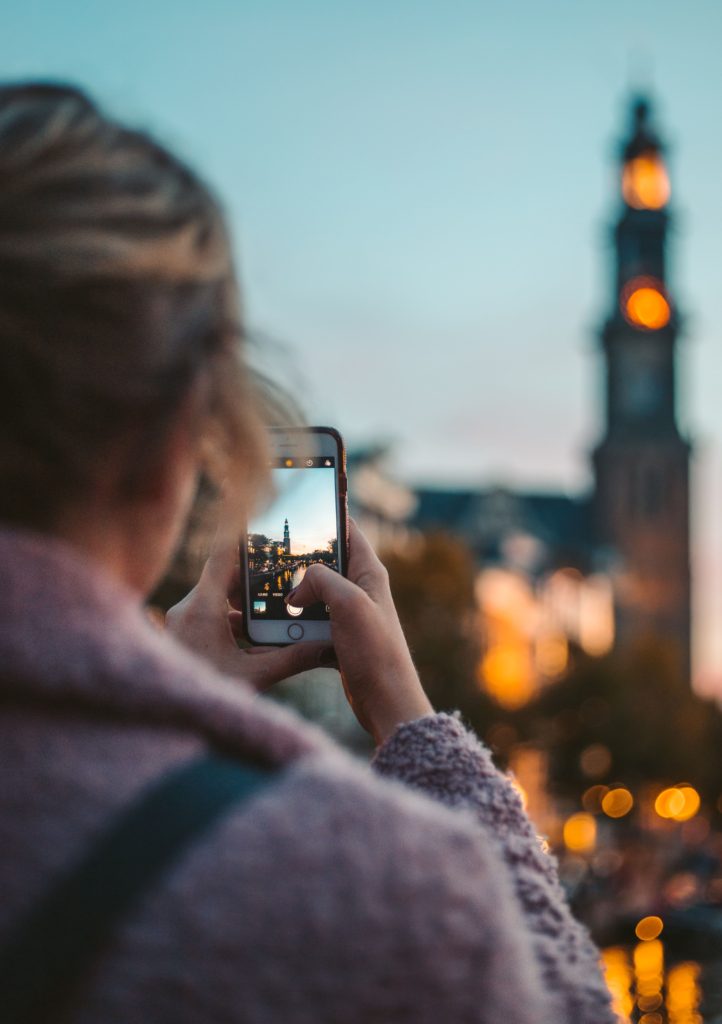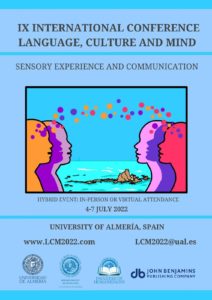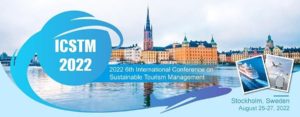Studies and analyses

Transmartur is a project framed in the Challenges of Andalusian society modality −in the line of Economy and digital society− and focused on the challenges of Andalusian SMEs that will focus on achieving the adaptation of their web content to new communication formats, advertising and marketing, and in the use of different digital tools to generate spaces for user participation through transcreation processes that also promote the use of inclusive language.
The results obtained will allow to establish recommendations aimed at facilitating the generation of content adapted to the characteristics of new media, which will be very useful for both SMEs and translation, marketing and communication professionals. The results will also contribute to the development of teaching resources linked to aspects of the language of communication and marketing itself, promoting a more holistic training of translation and transcreation professionals. This new profile will also require knowledge in post-digital communication to tackle this task globally.
Studies and analyses within the framework of this project:
Quantitatively and qualitatively analyzing the state of the transcreation of the websites of Andalusian SMEs in the tourism sector and the particularities of this field.
Developing the adequate indicators to evaluate the quality of the transcreation of corporate websites of Andalusian SMEs in the tourism sector.
Studying and analyzing the quality of the transcreation of corporate websites of Andalusian SMEs in the tourism sector in accordance with the established quality indicators.
Determining the necessary skills for the performance of transcreation in the tourism sector.
Establishing and disseminating work guidelines and protocols for the advice and guidance of specialists in web transcreation aimed at SMEs in order to facilitate and improve their professional performance.
Creating a professional environment for the interaction and training of professionals.
An approach to the emotional aspects of the tourism lexicon: the case of active tourism.
Castro-Prieto, R.M.; Jiménez-Castro, M. (2022). Aproximación a los aspectos emocionales del léxico turístico: el caso del turismo activo. IX Language, Culture and Mind International Conference. Almería (Spain). (Ongoing)
According to the Institute of Statistics and Cartography of Andalusia (IECA, 2019), tourism it is a key sector for the Andalusian economy, as it contributes 13% of the regional GDP and 14% in terms of employment. In order to foster this region as a tourist destination, tourism discourse is used to inform and persuade tourists (Malenkina & Ivanov, 2018). However, the resources used by tourists to search for information on destinations have changed enormously in recent years with the development of information and communication technologies (ICT). Nowadays, websites are one of the main sources of information for tourists, as they provide information about the destination, projecting a positive image and attracting tourists (Malenkina & Ivanov, 2018). Consequently, corporate and institutional websites have largely replaced traditional means of communication as they cannot provide audiovisual resources and updated information (Soto-Amela, 2017). The language found in these websites plays a key persuasive role, as it evokes pleasurable and unique emotions and encourages tourists to experience through senses and cognition (Soto-Almela, 2017). Perception is thus used to persuade potential visitors, recreating a pleasant experience and an attractive travel scenario.
Cognitive Linguistics starts from “the premise that language is a capacity integrated in general cognition” (Ibarretxe-Antuñano, & Valenzuela, 2012: 16) and argues that there is a link that connects linguistic structures, knowledge, thought and communication through experiential models that are created from sensory and motor activity (Cuenca & Hilferty, 1999), that is, it provides us with a disciplinary framework that can interrelate linguistic, knowledge and sensory structures. Based on a sample of active tourism companies in Andalusia, the aim of this work is to analyze, from a cognitive perspective, different sections of their web pages. Thus, the way in which emotions and feelings are linked to the language of tourism so as to attract potential visitors will be analyzed. The main objective is to carry out a corpus-based analysys to determine whether there is a link between the most frequently used lexicon of active tourism websites and emotions.
Communicating the Resilience and Corporate Social Responsibility of SMEs during Lockdown in Spain: A Visual and Exploratory Study of Communication Mechanisms and Strategies
García-Santiago, María Dolores (2022). Communicating the Resilience and Corporate Social Responsibility of SMEs during Lockdown in Spain: A Visual and Exploratory Study of Communication Mechanisms and Strategies. Sustainability. 14(13):7944.
The health crisis caused by COVID-19 has led to changes in the behaviour of businesses during lockdown, especially Small and Medium-sized enterprises (SMEs). This study aims to identify the capacity for reaction, resilience, and corporate social responsibility (CSR) from direct sources and from strategic communication categories. Firstly, to discover the communication mechanisms and strategies of innovative SMEs during lockdown in Spain for overcoming difficulties. And secondly, to confirm “Food and Drink”—sector SME resilience capacities through their communications, and the CSR capacity of the SMEs that supports the sustainability to the tourism sector. For this purpose, a qualitative analysis of the 2.0 messages communicated by the companies was carried out and a map generated from social network analysis to identify the most resilient SMEs based on strategic communication elements used. The results show an uneven business reaction that reflects the change of paradigm in communication with customers that is occurring heterogeneously. This study is original because few on this theme apply to SMEs in the Spanish context. We highlight they are all from the “Food and drink” sector and included in the list of enterprises with high growth rate through entrepreneurial spirit and innovation, allowing us to make certain comparisons and understand certain differences and respective resilience, including supply chains and CSR.
Gutiérrez-Artacho, J.; Olvera-Lobo, M. D. (2021). Formar en competencias transversales en Educación Superior: la traducción desde la perspectiva de la transcreación web. En: Javier Rodríguez Torres, J.; Amaro Agudo, A.; Martínez Rolán, X. (coord.). El EEES como solución a las nuevas necesidades educativas. Valencia: Tirant Humanidades. (Comunicando en el Siglo XXI: Nuevas fórmulas. Ciencias de la Comunicación). ISBN: 978-84-1853449-2. EN
During their training in translation, the transcreation professionals must develop a series of specific competences -including a broad knowledge of several languages and cultures-, as well as a series of transversal competences -which may be common to other specialties and which rarely gains sufficient prominence in the university education despite being highly valued in the labor market. The present paper shows the results of a teaching proposal aimed at fostering creativity as a transversal competence as well as training in transcreation from a professional perspective within the Translation and Interpreting degree. In this teaching experience, students have developed their final thesis through semi-professional work on the transcreation of corporate websites of companies organized around six stages run by the teachers. This way, students had to demonstrate all the skills they had acquired throughout their training. Creativity and individualized mentoring of each project have been encouraged, allowing the development of various transcreated translations from different perspectives: culture, marketing, assignment, among others.
Web presence and multilingual management in the tourism sector. An Analysis of Active Tourism and Ecotourism Corporate Websites from Southern Spain.

Rivera-Trigueros, Irene; Gutérrez-Artacho, Juncal; Olvera-Lobo, María-Dolores (2022, August 24-26). Web Presence and Multilingual Management in the Tourism Sector: An Analysis of Active Tourism and Ecotourism Corporate Websites from Southern Spain. 6th International Conference on Sustainable Tourism Management
The availability of a corporate website, especially if translated into other languages, can be a great ally for companies to reach international audiences at a very low cost. This is of fundamental importance for business sectors highly dependent on international customers, as is the case of tourism, and for regions with strong tourist flows, such as Andalusia (Spain). The aim of this paper is to analyze the web presence and multilingual dissemination of corporate information of Andalusian small and medium-sized enterprises (SMEs) in two emerging tourism sectors: active tourism and ecotourism. For this purpose, a sample of 343 companies was analyzed by means of frequency analysis and decision trees. The results show that, although the online presence of the companies analyzed was strong -almost 80% of them had a web page- most lacked the competitive advantages of offering a translated web page and, in those cases where translations were available, there was little linguistic diversity.
This paper expands on a previous study that compared the ecotourism sector with the active tourism sector in a sample of 160 SMEs: Corporate Websites and their Multilingual Dissemination. An analysis of Southern Spain Tourism Sector (2022). The results, in this case, showed that, although 70% of the companies owned a website, less than 40% translated their contents.
Corporate Websites and their Multilingual Dissemination. An analysis of Southern Spain Tourism Sector

Rivera-Trigueros, Irene; Gutérrez-Artacho, Juncal; Olvera-Lobo, María-Dolores (2022, March 9-11). Corporate Websites and their Multilingual Dissemination. An analysis of Southern Spain Tourism Sector. International Conference on Industry Sciences and Computer Science Innovation
Information and Communication Technologies provide valuable opportunities for companies to expand their business. In this sense, the availability of a multilingual corporate website can be of great help when it comes to reach international targets at a reduced cost. This is especially relevant in countries with remarkable tourism flows and foreign population, which is the case of Spain. The aim of this paper is to analyze the web presence and the multilingual dissemination of their corporate information of small and medium-sized companies (SMEs) from the tourist sector located in Andalusia (Spain). To meet this objective, a sample of 160 SMEs has been analyzed. A frequency analysis has been carried out as well as decision trees, the latter in order to identify drivers for influencing companies for having a website and its subsequent translation. Results show that, although around 70% of the companies had a corporate website, less than 40% of them translated their content and, if they do it, they mostly offered only one translated version of the webpage.
Translational Strategies in Touristic Corporate Websites

Jiménez-Castro, M.; Rivera-Trigueros, I.; Díaz-Millón, M. (2022, July 14-15). Translational Strategies in Touristic Corporate Websites. Title of Conference: Internacional Conference on Applied Business and Management (ICABM), Porto (Ongoing)
In May 2022, researchers will participate in ICABM, an international conference on business research. An article will be presented whose summary is as follows:
Adequately transmitting the richness of countries’ heritage and cultural offerings is key to attracting tourists. To do so, the tourism discourse is used to inform and persuade tourists (Malenkina & Ivanov, 2018) as well as to shape their attitudes and behavior (Dimitroulia, 2021). Thus, the impact of this information should be as attractive for a foregin audience as for the original audience. Moreover, it is worth noting that the internet and Information and Communication Technologies have deeply revolutionized the way in which we communicate, dramatically changing information exchanges in all spheres of society (Rivera et al., 2020), including tourism. One of the main sources of information for tourists are corporate websites, since they not only provide information about the destination, but also project a positive image and attract tourists to that place (Malenkina & Ivanov, 2018). They are essential tools in image dissemination and marketing of destinations, so it is necessary to update and tailor them to engage with potential visitors (Fernández-Cavia & Castro, 2015). In these web pages, there is information containing many cultural references specific to the country of destination that need to be adapted to generate the desired impact on the target audience. Although cultural diversity in this context can be a great tourist attraction, it can also be a potential source of misunderstandings and inefficient intercultural communication (Malik et al., 2017). As a result, it is important that multilingual information is managed with an inclusive perspective, since it has been proven that tourists evaluate the provision of services in their language positively (Dimitroulia, 2021).
In the light of the previously exposed scenario, the main objective of this work is to analyze translational strategies applied in corporate websites from the tourism sector through a systematic literature review methodology. A total of 11 scientific works have rigorously been compiled and analyzed so as to review the existing literature on translational strategies implemented in tourism websites. This systematic literature review has focused on new trends in the translation sector, namely transcreation and localization, that can offer innovative solutions to the translation challenges posed by this industry. So far, no such studies have been carried out.
Transcreation or how higher education must answer to the new tendencies within the translation industry

Gutiérrez-Artacho, J.; Olvera-Lobo, M.D. (2022). Transcreation or how higher education must respond to the new trends in the translaiton industry. INTED2022, 16th annual International Technology, Education and Development Conference. 7-8 march 2022.
In recent years, an interesting trend has been observed in the translation field, as well as from an academic and professional perspective. We refer to what is known as “transcreation”, that is to say, the intra/interlinguistic reinterpretation of a text for its adaptation to the target language audience (Gaballo, 2012). Thus, the transcreation process produces a new type of translation in which both the words and the meaning of the original texts can be seriously modified to generate the same effect on the target language audience as on the source language audience. To this end, it must be taken into account that there are not only linguistic differences, but also cultural differences. Therefore, the transcreative approach may be described as a creative, subjective and emotive process whereby some parts of the message are translated while others are adapted to the target language audience.
However, the current academic curricula from the different undergraduate degrees offered by Spanish universities do not incorporate the development of specific competences of professional transcreators. The proposal detailed in this article is based on this reality and on the initiative taken by the professors involved in the mentoring of the final thesis, which is compulsory in order to obtain the university degree certificate in Translation and Interpreting. This idea, implemented at the University of Granada (Spain), intends to promote and apply the necessary skills to meet the new professional profile of transcreators by simulating real briefs. The topic selected for the briefs was the transcreation of corporate websites of Spanish SMEs in the healthcare sector (Díaz-Millón & Gutiérrez-Artacho, 2020; Gutiérrez-Artacho & Olvera-Lobo, 2021). Consequently, translation training is approached from the perspective of project-based teaching and learning processes with the aim of engaging students in the culture of entrepreneurship, innovation and the adoption of new technologies (Robinson et al., 2016).
The development of an assessment tool to analyze the use of inclusive language: an institutional perspective

Díaz-Millón, M., Rivera-Trigueros, I. & Pérez-Contreras, Á. (2021). The development of an assessment tool to analyze the use of inclusive language: an institutional perspective. ICERI 2021: 14th annual International Conference of Education, Research and Innovation 8th – 9th November, 2021.
Inclusive language must take into account speakers of any origin, nationality, sexual orientation, gender identity, race or religion. This is especially relevant in those plural contexts – multilingual, multiethnic, multicultural, multigender – such as those found in Higher Education institutions. In this context, a series of initiatives that have given rise to guides for the use of inclusive and non-sexist language are worthy of attention, such as those proposed by the European Parliament (2009) –translated into 22 languages–, the Equality Commission of the General Council of the Judiciary (2009), the Madrid City Council (2017) or some Spanish public universities. Given the important role that inclusive language occupies in Higher Education, there is a need to further delve into the keys to inclusive language. Therefore, the main objective of this work is to develop an evaluation tool to analyze and describe inclusive language (including gender) from the perspective of institutional language; more specifically, from the perspective of Spanish public universities. For this purpose, the methodology used covered the following phases. In the first place, a bibliographical review of all the guides for inclusive language published by Spanish universities was carried out. Second, these guidelines and their key points in common were synthesized. Finally, these common points were established as a set of indicators for the evaluation of inclusive language. As a result of this analysis, an evaluation framework was developed to assess the presence of inclusive language in different types of texts, including both linguistic and non-linguistic elements (images, videos, design, etc.). This tool has opened future lines of research such as the analysis of inclusive language in texts of different genres, produced in different fields and covering different topics. In addition, this tool helps in offering a description of the characteristics of the inclusive institutional language used in Higher Education in Spain.
Transcreation in digital tourism information: An inclusive language approach
Gutiérrez-Artacho, J.; Olvera-Lobo, M.D. (2022) Transcreation in digital tourism information: An inclusive language approach. In: Cembranel, P.; Rodrigues Soares, J.R.; Costa Perinotto, A.R.(eds.) Promoting Social and Cultural Equity in the Tourism Sector. Hersey: IGI Global (Ongoing)
In the tourism sector, language is one of the main persuasive instruments when developing informative resources and marketing tools aimed at potential clients. In the context of the modern digital society, one aspect to arouse considerable interest refers to the importance of facilitating access to information adopting a multilingual and translingual perspective. The need to favour communication and the dissemination of information from the sector, along with interaction with potential consumers, makes it essential for tourism companies and professionals to achieve an internet presence that is solid, professional and adapted to target markets. This aspect is even more important in the case of small and medium sized enterprises, for which the use of the internet and Web 2.0 tools offers numerous opportunities in exchange for reduced cost (Ferreira; Gutiérrez-Artacho & Bernardino).
Essentially, from the professional, enterprise and human perspective it is imperative that companies adapt their corporate websites to different languages and cultures if they seek to reach greater success and bigger audiences. It is necessary, however, to take into account that the information destined towards dissemination on the web is comprised of different semiotic sources –linguistic elements, images, colour, design, animations, voices, music, etc–. For these multi-mode texts, language is no longer the dominant semiotic source, rather, another resource that interacts with the rest, creating meaning (Munday, 2004). Therefore, the mere translation of a website into other languages is often insufficient for contributing to a satisfactory experience on the part of its users. Transcreation, which consists of the intra or interlinguistic reinterpretation of a text to adapt it to the target public (Gaballo, 2012), constitutes a growing trend in the sphere of translation. This is reflected in the fact that standards such as ISO 17100 (Aenor, 2016) have recognised transcreation as an added value service within the language services industry. In the case of interlinguistic reinterpretation (which implies at least two communication languages), transcreation leads to a type of translation wherein both the words and the meaning of the original texts can be susceptible to serious modification with the aim of producing the same effect in the target receivers as in the source audience –taking into account the possible existence not only of language differences, but also cultural differences between both publics–.
Given its nature, the fields where transcreation has reached a greater development are precisely those related to marketing, communication and advertising (Díaz-Millón, Olvera-Lobo, 2021), due to the need to adapt advertising campaigns and marketing actions to other globalised markets. In this regard, the aim is for an advertising text to achieve the desired effect in all target markets but always conserving the creative intention of the original campaign, the message that it intended to transmit and specific aspects of the marketing language such as the so-called brand voice (Pedersen, 2014). Thus, transcreation seeks interlinguistic adaptation to different audiences and markets, to which it does not constitute a mere translation subtype, rather, it involves complex processes that require translation methods and skills up to a certain point or in some phases (Katan, 2016; Pedersen, 2016). The transcreation approach can therefore be described as a creative, subjective and emotive process via which some parts of the message are translated and others adapted to the target market. For all of the above, it is perfectly possible, even recommendable, to apply transcreation processes to certain digital products, such as corporate websites, given that they include diverse elements specific to the language of advertising (Morón & Calvo, 2018; Rike, 2013). A characteristic of these products is that they present numerous translation problems arising from cultural components, humour, poetry, neologisms, plays on words and other evocative resources. In these cases, translation professionals approach jobs from clients (companies or individuals) creatively, to which the process becomes transcreative.
As one can imagine, in plural contexts –multilingual, multiethnic, multicultural, multigender– such as those in which transcreation processes occur, the adequate use of language is a fundamental ingredient. Therefore, so-called inclusive language must take into account speakers of any origin, nationality, sexual orientation, gender identity, race or religion. Specifically, from a gender perspective, translation –and, hence, also transcreation– may be a powerful tool for social change and for promoting the visibility of the role of women in society (De Marco, 2012). Attention might be drawn to the initiatives that have given rise to guides for the use of inclusive, non-sexist language such as those proposed by the European Parliament (2009) translated into 22 languages, and by numerous public and private bodies and institutions from very different geographical points. Certain publications also include guidelines on how to use images in a non-sexist way. In this way, given the creative freedom enjoyed by transcreation specialists, which allows them to have an influence over the contents they adapt and modify, it is essential that these professionals acquire a gender perspective that permits them identify the way in which social inequalities are reflected in texts, and how to reduce the impact thereof.
This chapter tackles the need to incorporate strategies of linguistic and cultural accessibility that guarantee respect for diversity and equality in processes of dissemination and access to tourism information in the web environment. Our proposal focuses on transcreation as a fundamental tool from the perspective, furthermore, of inclusive language. These reflections will contribute to establishing recommendations aimed at facilitating the creation of contents adapted to the characteristics of the new media. These guidelines may be of great use both for professionals in the tourism sector and for those in the field of communication or translation, amongst others. In addition, our contribution aims to favour the development of teaching resources linked to aspects of the specific language of communication and marketing, encouraging more holistic training for students of tourism and related areas. This rejuvenated professional profile will also require knowledge in post-digital communication to undertake this task in a global manner.